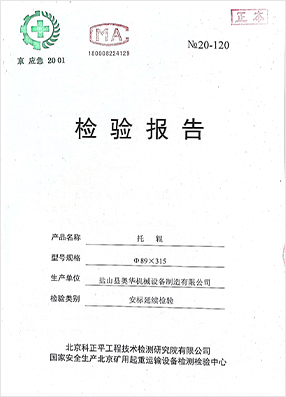 Afrikaans
Afrikaans  Albanian
Albanian  Amharic
Amharic  Arabic
Arabic  Armenian
Armenian  Azerbaijani
Azerbaijani  Basque
Basque  Belarusian
Belarusian  Bengali
Bengali  Bosnian
Bosnian  Bulgarian
Bulgarian  Catalan
Catalan  Cebuano
Cebuano  Corsican
Corsican  Croatian
Croatian  Czech
Czech  Danish
Danish  Dutch
Dutch  English
English  Esperanto
Esperanto  Estonian
Estonian  Finnish
Finnish  French
French  Frisian
Frisian  Galician
Galician  Georgian
Georgian  German
German  Greek
Greek  Gujarati
Gujarati  Haitian Creole
Haitian Creole  hausa
hausa  hawaiian
hawaiian  Hebrew
Hebrew  Hindi
Hindi  Miao
Miao  Hungarian
Hungarian  Icelandic
Icelandic  igbo
igbo  Indonesian
Indonesian  irish
irish  Italian
Italian  Japanese
Japanese  Javanese
Javanese  Kannada
Kannada  kazakh
kazakh  Khmer
Khmer  Rwandese
Rwandese  Korean
Korean  Kurdish
Kurdish  Kyrgyz
Kyrgyz  Lao
Lao  Latin
Latin  Latvian
Latvian  Lithuanian
Lithuanian  Luxembourgish
Luxembourgish  Macedonian
Macedonian  Malgashi
Malgashi  Malay
Malay  Malayalam
Malayalam  Maltese
Maltese  Maori
Maori  Marathi
Marathi  Mongolian
Mongolian  Myanmar
Myanmar  Nepali
Nepali  Norwegian
Norwegian  Norwegian
Norwegian  Occitan
Occitan  Pashto
Pashto  Persian
Persian  Polish
Polish  Portuguese
Portuguese  Punjabi
Punjabi  Romanian
Romanian  Russian
Russian  Samoan
Samoan  Scottish Gaelic
Scottish Gaelic  Serbian
Serbian  Sesotho
Sesotho  Shona
Shona  Sindhi
Sindhi  Sinhala
Sinhala  Slovak
Slovak  Slovenian
Slovenian  Somali
Somali  Spanish
Spanish  Sundanese
Sundanese  Swahili
Swahili  Swedish
Swedish  Tagalog
Tagalog  Tajik
Tajik  Tamil
Tamil  Tatar
Tatar  Telugu
Telugu  Thai
Thai  Turkish
Turkish  Turkmen
Turkmen  Ukrainian
Ukrainian  Urdu
Urdu  Uighur
Uighur  Uzbek
Uzbek  Vietnamese
Vietnamese  Welsh
Welsh  Bantu
Bantu  Yiddish
Yiddish  Yoruba
Yoruba  Zulu
Zulu conveyor belt return rollers
Understanding Conveyor Belt Return Rollers Essential Components for Efficiency and Safety
Conveyor systems play a vital role in various industries, facilitating the movement of materials from one point to another. Among the key components of these systems are the return rollers, which are instrumental in ensuring that conveyor belts operate smoothly and efficiently. This article delves into the significance of conveyor belt return rollers, exploring their functions, benefits, and maintenance considerations.
What Are Return Rollers?
Return rollers are cylindrical components that are positioned underneath the conveyor belt. Their primary role is to support the return section of the belt, which moves back from the discharge point to the loading point. Return rollers help maintain proper belt tension, prevent sagging, and ensure a smooth return path. Typically made from durable materials like steel or rubber, these rollers are designed to withstand the wear and tear of heavy material transportation.
Functions of Conveyor Belt Return Rollers
1. Support and Alignment Return rollers support the weight of the conveyor belt and the materials it carries. Their alignment prevents misalignment of the belt, which can result in operational issues, including increased wear on the belt and potential system failures.
2. Reducing Friction By providing a smooth surface for the conveyor belt to glide over, return rollers reduce friction between the belt and the supporting structure. This reduction in friction not only improves the efficiency of the conveyor system but also extends the lifespan of the belt.
3. Preventing Material Buildup Properly functioning return rollers help prevent material buildup on the return side of the conveyor belt. Excess debris can lead to mechanical failures and operational delays, making return rollers crucial for maintaining cleanliness and functional integrity.
4. Facilitating Safe Operation Safety is paramount in industrial settings. Return rollers contribute to a safer working environment by minimizing the risk of the belt slipping or derailing. This, in turn, helps to prevent accidents and injuries associated with conveyor systems.
Benefits of Using High-Quality Return Rollers
conveyor belt return rollers

Investing in high-quality return rollers provides numerous advantages. First, they enhance the overall efficiency of the conveyor system by ensuring optimal belt performance. Reduced friction means less energy consumption, which can lead to significant cost savings in energy expenses over time.
Second, durable return rollers decrease the frequency of maintenance and replacement
. This longevity translates to reduced downtime, allowing businesses to maintain their productivity and meet operational targets.Moreover, high-quality return rollers can accommodate a variety of material types and weights, making them versatile components suitable for diverse industrial applications.
Maintenance Considerations
To ensure the longevity and efficiency of conveyor belt return rollers, regular maintenance is essential. Key maintenance practices include
- Routine Inspections Regularly inspecting return rollers for signs of wear, damage, or misalignment helps identify potential issues before they escalate.
- Lubrication Applying appropriate lubricants to the bearings of return rollers minimizes friction and prolongs their lifespan.
- Cleaning Keeping return rollers free from debris and buildup enhances their performance and reduces the risk of mechanical failure.
In conclusion, conveyor belt return rollers are critical components that significantly impact the efficiency and safety of conveyor systems. By understanding their functions and maintaining them properly, businesses can optimize their operations and reduce the risk of costly disruptions. Investing in high-quality return rollers can prove invaluable in the quest for operational excellence in any material handling industry.
-
Revolutionizing Conveyor Reliability with Advanced Rubber Lagging PulleysNewsJul.22,2025
-
Powering Precision and Durability with Expert Manufacturers of Conveyor ComponentsNewsJul.22,2025
-
Optimizing Conveyor Systems with Advanced Conveyor AccessoriesNewsJul.22,2025
-
Maximize Conveyor Efficiency with Quality Conveyor Idler PulleysNewsJul.22,2025
-
Future-Proof Your Conveyor System with High-Performance Polyurethane RollerNewsJul.22,2025
-
Driving Efficiency Forward with Quality Idlers and RollersNewsJul.22,2025





























